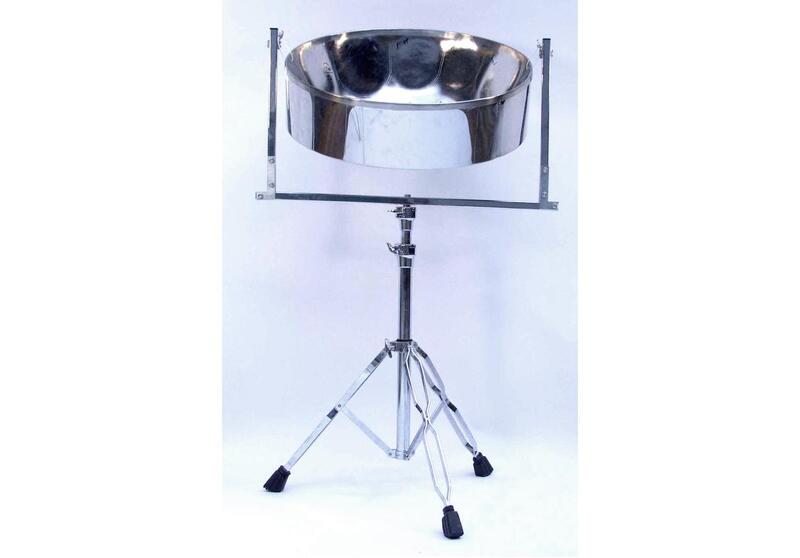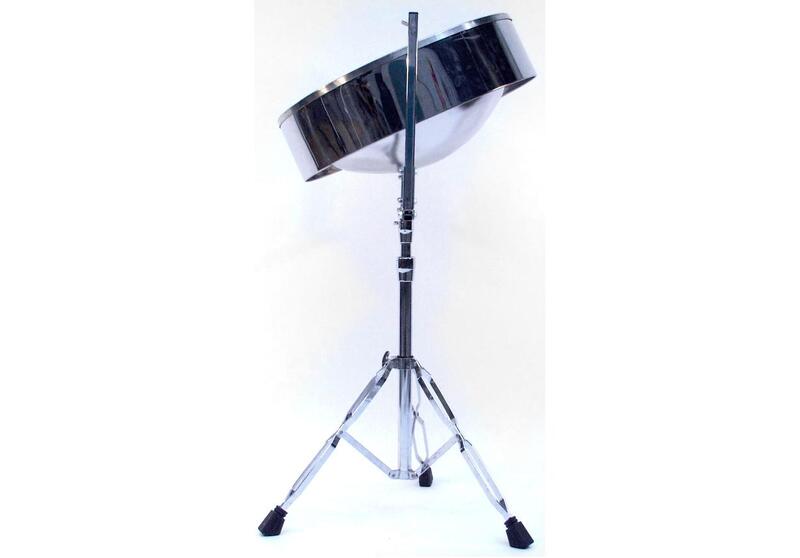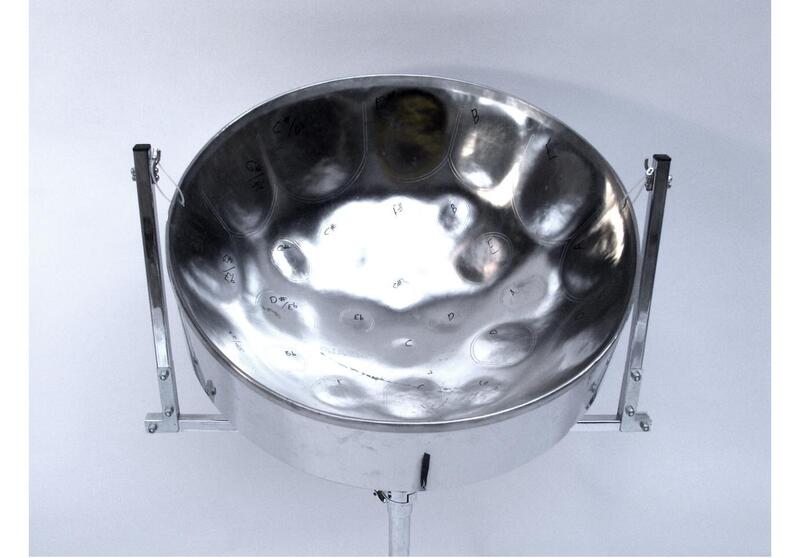Tenor Pan
Title
Tenor Pan
Video
Physical description
This instrument consists of one drum with the shortest “skirt” or side length of the steel pan family at approx. 12-15 cm (Blake, 106). The notes are “raised” from the concave bowl in a now-standard circle of fifths arrangement. The lowest notes found along the circumference of the bowl are U-shaped, while the higher octave notes are either oval or circular-shaped inside. The tenor pan must be suspended on a stand or rack to allow the drum to resonate and is played with thin rubber mallets.
Historical background
It is generally accepted that the tenor pan developed from the early “ping pong,” a small zinc pan which could play simple melodies (such as children’s songs, and simple calypso choruses) of three to five notes (Goddard 38, Stuempfle 40). Sometime after the end of WWII, however, it was discovered that the larger 55-gallon oil drums borrowed from the American naval base could produce more notes. By the early 1950s, the tenor became a fully-chromatic instrument. Today, the tenor pan is the primary melodic and virtuosic instrument of the contemporary steel band. It is also the instrument most frequently played solo outside of the traditional steel band context.
Tuning
The tenor has a chromatic range between D4 and G6, with 28 to 30 chromatic notes (Blake, 109). The tenor pan can be found in several styles, dependent upon the individual tuner, including the “open bore” style (in which several holes are drilled into the pan to create a brighter tone) and the over-sized tenor (dubbed the “mega pan”), which extends the lower range for solo performance.
Geography
Trinidad and Tobago
Classification
111.241.12 Gongs with divided surface sounding different pitches
Ensemble
Steel Pan Ensemble
Materials
Steel
Date/Era
20th century to present
Bibliography
Blake, F.I.R. The Trinidad & Tobago Steel Pan: History and Evolution. Port of Spain, Trinidad: Published by author.
Goddard, George “Sonny.” 1991. Forty Years in the Steelbands, 1939-1979. Port of Spain, Karia Press.
Steumpfle, Stephen. 1995. The Steelband Movement: The Forging of a National Art in Trinidad and Tobago. Philadelphia: Univ. of Pennsylvania Press.
Thomas, Jeffrey Todd. 1985. A History of Pan and the Evolution of the Steel Band in Trinidad and Tobago. M.A. Thesis. Middletown, CT: Wesleyan University.
Goddard, George “Sonny.” 1991. Forty Years in the Steelbands, 1939-1979. Port of Spain, Karia Press.
Steumpfle, Stephen. 1995. The Steelband Movement: The Forging of a National Art in Trinidad and Tobago. Philadelphia: Univ. of Pennsylvania Press.
Thomas, Jeffrey Todd. 1985. A History of Pan and the Evolution of the Steel Band in Trinidad and Tobago. M.A. Thesis. Middletown, CT: Wesleyan University.
Additional resources
Pan Trinbago
http://www.pantrinbago.co.tt
http://www.pantrinbago.co.tt
Contributors
Amelia Ingram (2004)
Collection
Citation
“Tenor Pan,” Wesleyan University Virtual Instrument Museum 2.0, accessed December 28, 2025, https://wesomeka.wesleyan.edu/vim2/items/show/25.


